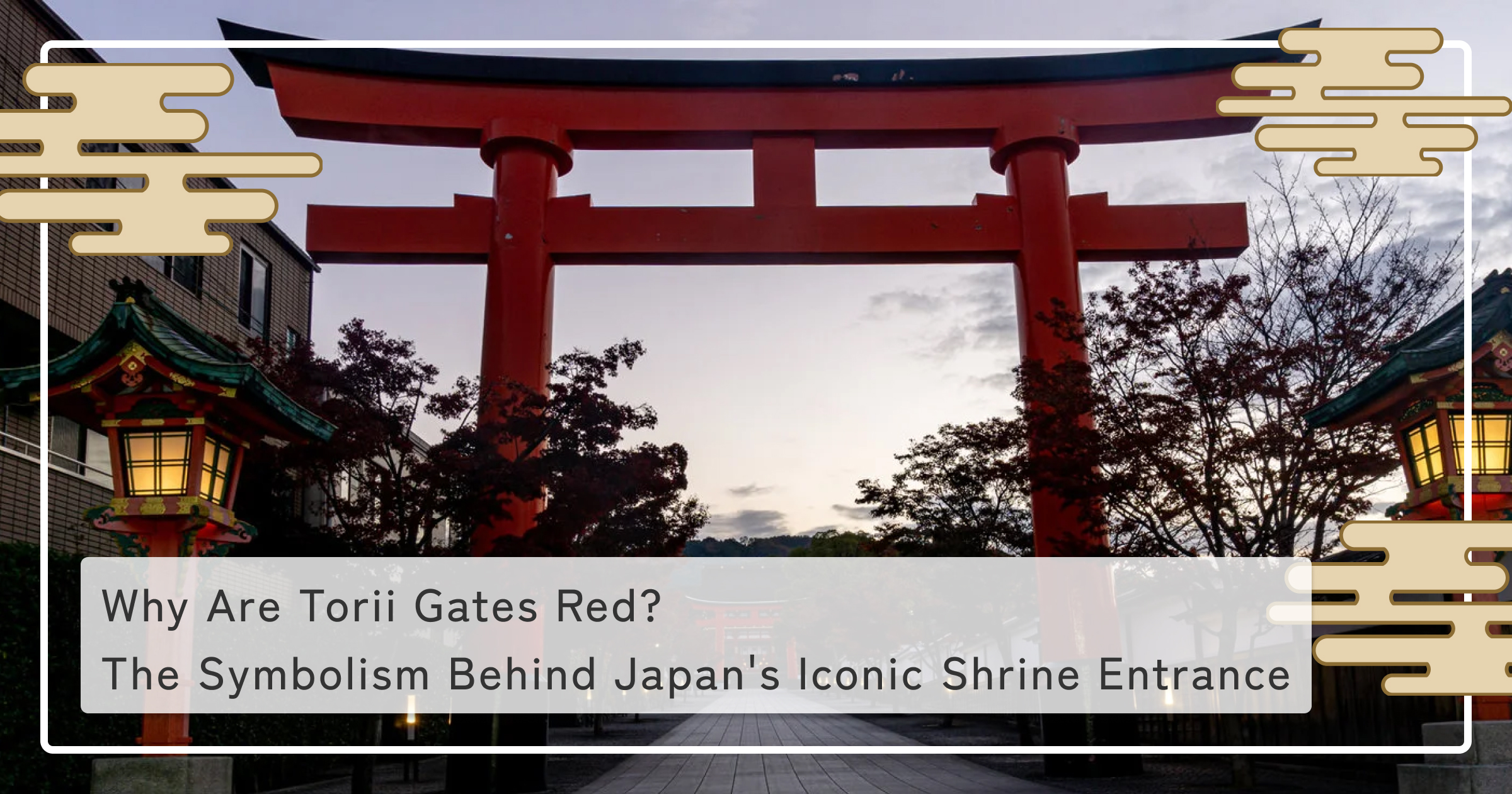
Why Are Torii Gates Red? The Symbolism Behind Japan's Iconic Shrine Entrance
You often see torii gates at shrines all over Japan—and most of them are a vivid red (technically *vermilion*). But why are so many torii painted this striking color?
This article explores the meaning, origins, and cultural background behind the color of torii gates—knowledge that will enrich your next shrine visit.
Torii: The Boundary Between the Human World and the Divine
Let’s start with the basics.
A torii marks the sacred boundary between a shrine’s holy precinct and the ordinary world. Passing through signifies stepping from daily life into a spiritual realm.
In other words, a torii is far more than decoration—it has deep religious and spiritual meaning.
Why Red? The Meaning and Power of Vermilion
1. Protection from Evil
Since ancient times, red has been viewed as a color that repels evil. Associated with the sun, fire, and blood, red symbolizes life-force.
Painting a torii vermilion was believed to create a barrier that keeps negative spirits away.
Red is also said to focus the mind, encouraging a respectful, sacred mindset as you enter.
2. Natural Preservative
Traditional vermilion pigment contains cinnabar, a mercury-based mineral. The resulting paint helped protect wooden structures from rot and insects.
Because shrines stand outdoors, using vermilion also served a practical purpose—extending the life of the wood.
3. A Color Used for Sanctity
Vermilion is not limited to torii; you’ll see it on shrine halls and even Buddhist temples. Beyond aesthetics, the color visually expresses purity and sacredness.
Not Every Torii Is Red
Of course, not all torii are painted. At Ise Grand Shrine, for example, the gates remain unpainted to showcase the natural beauty of the wood—a style called shiraki-zukuri, reflecting Shinto ideals of simplicity and harmony with nature.
You can also find black, white-wood, or stone torii, their materials and colors reflecting the shrine’s deity or tradition.
Where Did the Red Torii Tradition Begin?
The custom of vermilion torii dates back to architectural influences from China during the Nara and Heian periods (8th–12th centuries).
At that time, vermilion was reserved for nobility and sacred spaces, expressing reverence for gods and buddhas.
Today, the best-known example is the thousands of red torii at Fushimi Inari Taisha in Kyoto.
Iconic Example: The Thousand Torii of Fushimi Inari Taisha
Fushimi Inari Taisha is the head shrine of roughly 30,000 Inari shrines across Japan.
Its famous “Senbon-torii” (Thousand Torii Gates) are all painted red, symbolizing a path through which prayers and wishes are delivered.
Each gate bears the name of a donor, showcasing the connection between faith and the culture of offerings.
Enjoy Shrine Visits by Noticing the Color of Torii
A red torii is more than eye-catching—it symbolizes protection, preservation, and sanctity.
By noting differences in color and material, you can appreciate the unique character of each shrine.
On your next visit, take a moment to observe the torii before you walk through; it helps set your mind for a respectful experience.
Summary: Why Are Torii Red?
The redness of torii combines centuries-old beliefs with practical needs.
Red symbolizes protection, life, and sacredness—serving as a spiritual barrier against evil while the pigment itself protects the wood.
Inari shrines, in particular, are famous for their red gates, reflecting strong devotional ties.
Yet torii come in many colors and materials, each telling a different cultural story.
By paying attention to a shrine’s torii, you’ll gain deeper insight into its history and beliefs—and enrich your own visit.